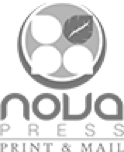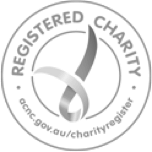Recently, five members of the Spinal Injury Project team were invited to present their research at the 39th Australasian Neuroscience Society (ANS) conference in Adelaide, South Australia. This conference hosts scientific researchers and clinicians from all over Australia with several international speakers invited to talk about their work.
A/Prof Jenny Ekberg presented about the three-dimensional (3D) cell culturing system that has been developed by the Spinal Injury Project team, driven by Dr Mo Chen. This method of culturing cells in 3D allows to team to study cells that have grown in way that resembles the environment inside the nervous system in the body. This provides more accurate results when compared to cells grown in 2D (“flat”) cultures.
A/Prof James St John presented about the work of the Spinal Injury Project team to bioengineer a cell transplantation therapy for spinal cord injury. The team has developed high-quality 3D cell constructs forming a nerve bridge which can be transplanted into the injured spinal cord. The use of this nerve bridge has resulted in significantly improved cell survival, integration and regeneration following transplantation therapy in pre-clinical studies.
Dr Mariyam Murtaza presented work on the novel cell purification method developed by the Spinal Injury Project team. This method is used by the team to isolate and culture high purity olfactory ensheathing cells (OECs; cells that support the nerve responsible for sense of smell) from nasal biopsies. OECs are the cells that the Spinal Injury Project team transplant into the injured spinal cord which possess an unusual ability to promote neural regeneration. Purification of these cells is notoriously difficult, and thus, improved purification methods are urgently needed. This method allows the team to investigate OECs consistently with reduced experimental variation and paves the way for better transplantation outcomes.
Dr Ali Delbaz presented about his work investigating bacterial infection of glial cells (supporting cells of the brain). His work showed that certain bacteria can cause dramatic pathological changes in glial cells. The changes observed were similar to those that can occur in cancer. This work supports the prospect that other bacterial species may also contribute to the initiation and/or development of certain cancers.
PhD candidate Heidi Walkden presented about her work investigating bacterial invasion of the brain. Her work has found that an injury to the nasal cavity can increase bacterial invasion of the brain via nerves found within the nose. These findings open the possibility that other bacterial species may also use this route to invade the brain, contributing to the growing correlation between bacteria and chronic diseases of the central nervous system, such as Alzheimer’s disease.
The conference ended well with PhD candidate Heidi Walkden winning People’s Choice Award during the student scientific photo competition! Attending the 39th Australasian Neuroscience Society conference was a wonderful opportunity for the Spinal Injury Project team to promote their world-leading research and to build connections with academics from Australia and other countries.












